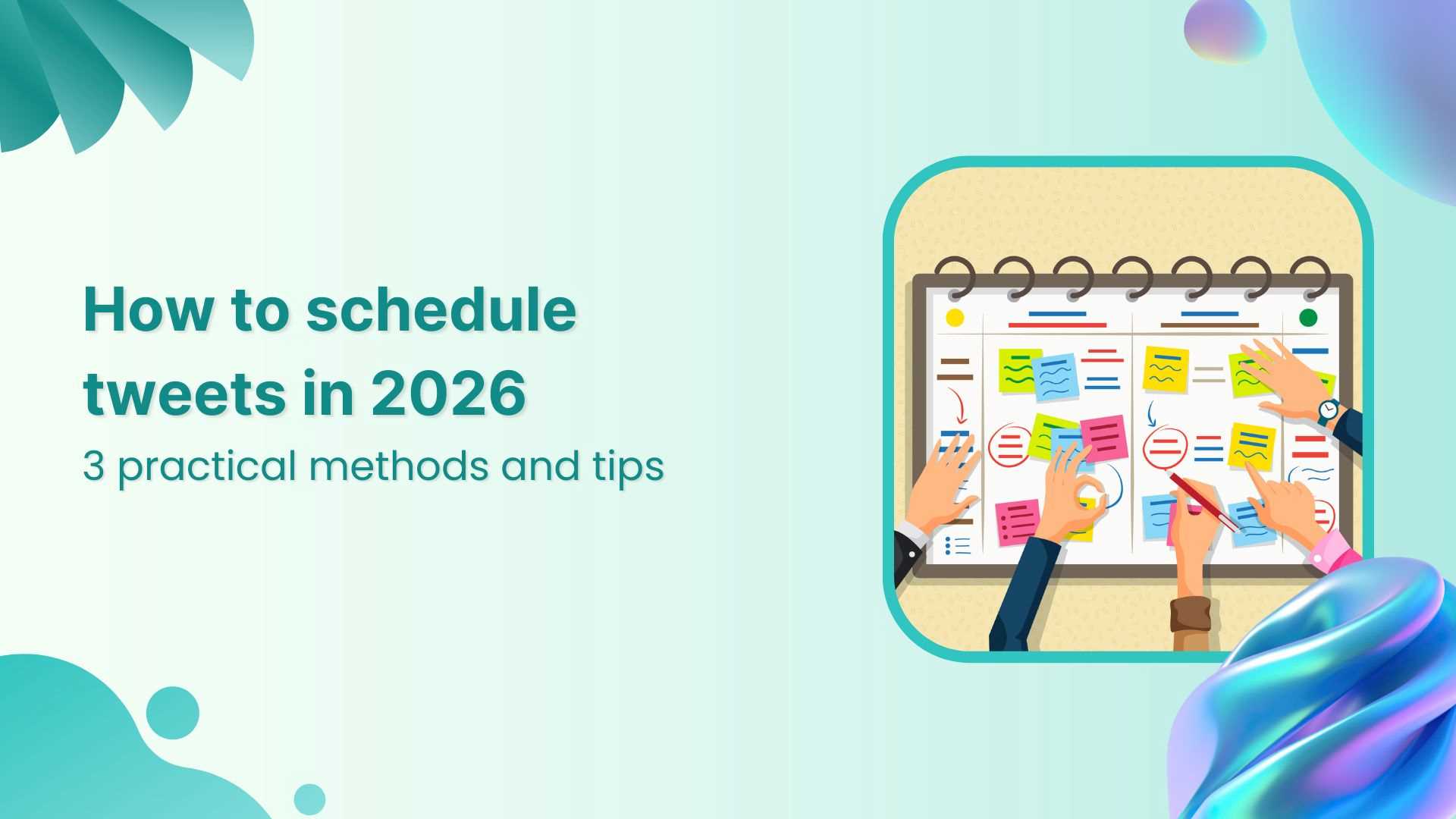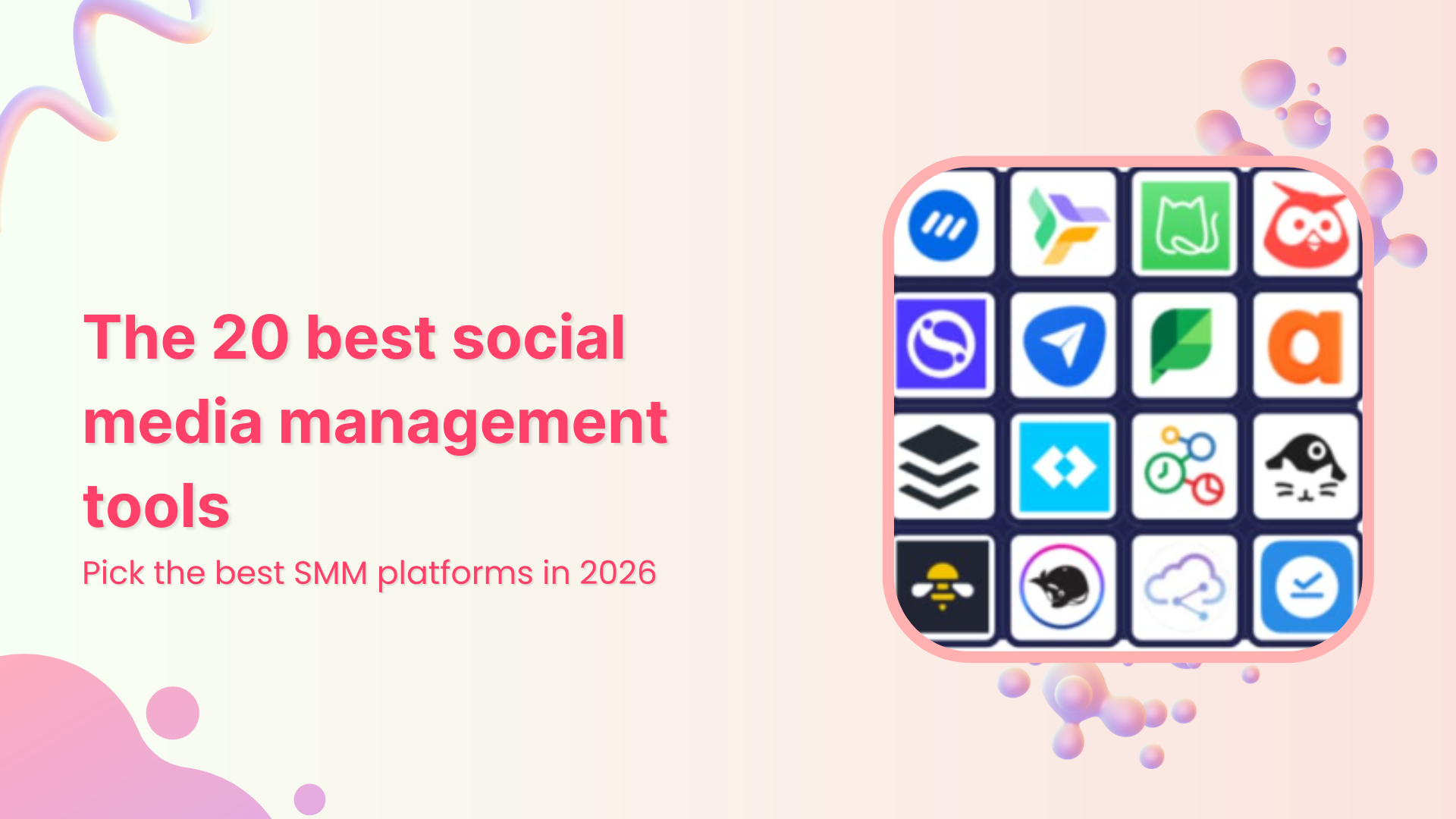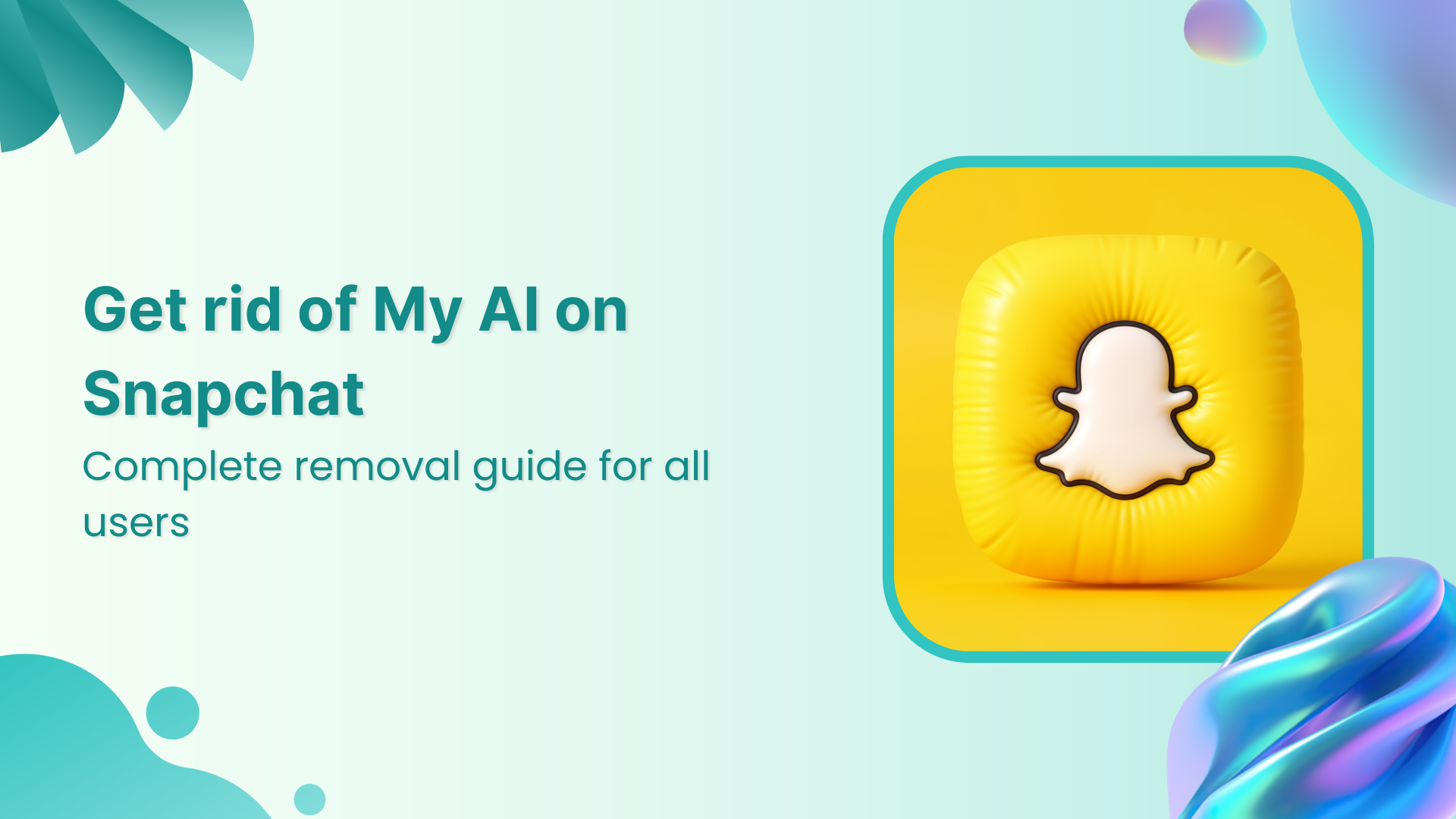Bulk-generate & schedule posts in seconds with Smart Scheduling. Try now!
15 strategies to identify and engage your social media target audience
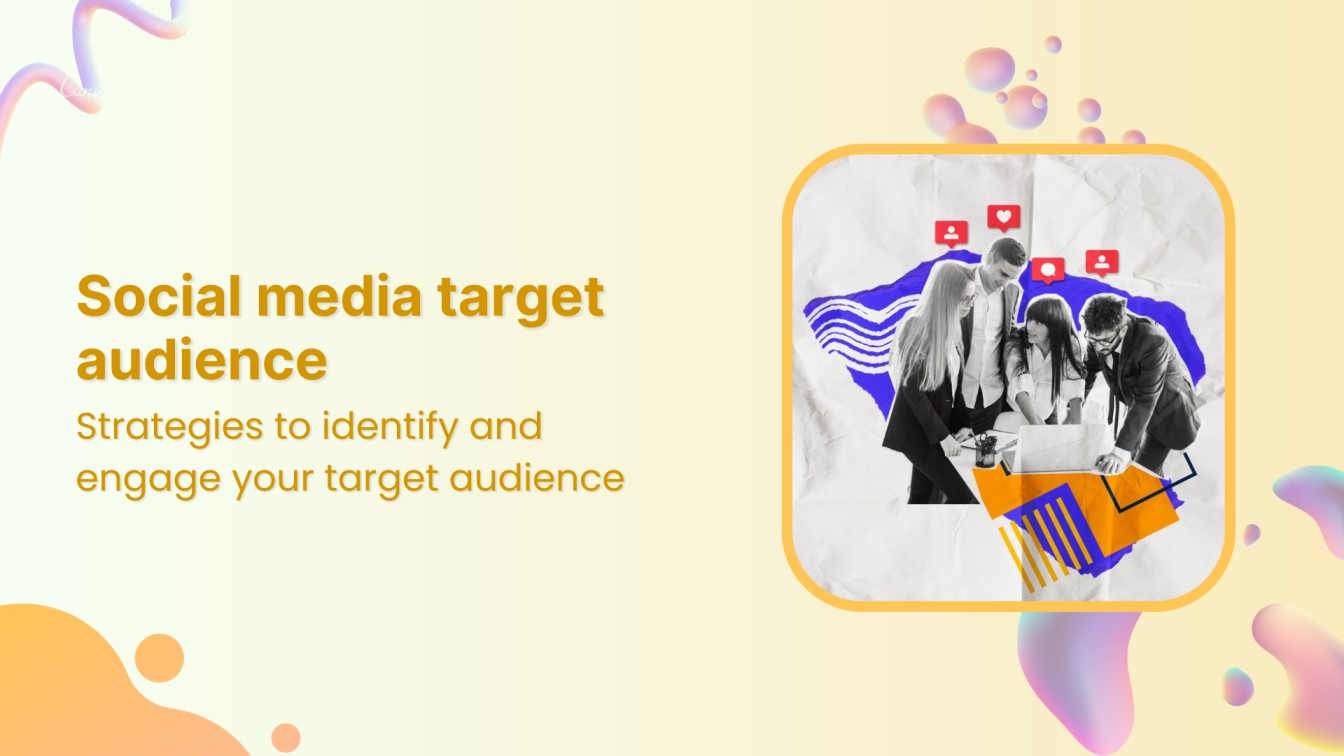
The social media target audience concept has become more of a buzzword in recent times, but finding the target audience is an effective strategy to transform your online presence.
As of 2024, there are 5.44 billion internet users and 5.04 billion social media users, representing 62.6% of the world’s population. Understandably, you cannot target this entire audience simultaneously, so it is vital to find a specific chunk of the audience, also called the target audience, for targeted social media marketing.
But before we discuss how to identify and engage your target audience, it is vital to understand what a social media target audience is and why it is important. Let’s examine these details.
Simplified social media marketing for individuals & agencies.
Try ContentStudio for FREE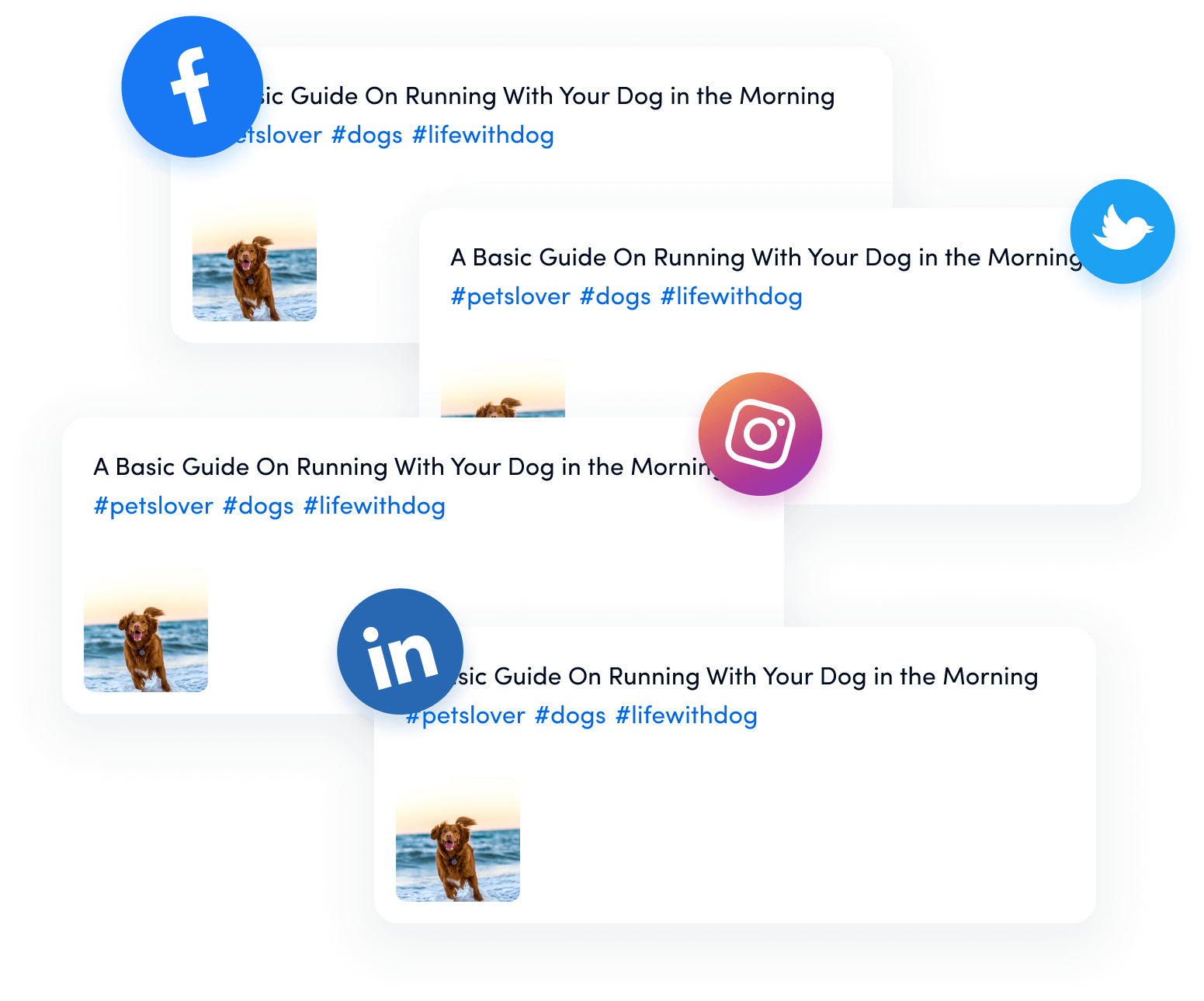
What is a social media target audience?
A target audience is the group of people who want to buy your products or services. If a company tries to sell to everyone instead of focusing on a particular group of people, it is highly likely that it won’t be able to sell to anyone.
As per this same concept, a social media target audience means the specific audience on social media platforms you want to target through your social media advertising and marketing efforts.
Generally, the social media target audience is determined based on demographics, including age, occupation, education level, location, gender, and religion. Similarly, user behavior can also be considered when specifying a social media target audience.
One key aspect of social media targeting is that there is no one-size-fits-all rule or procedure. Instead, it is a versatile and evolving experience.
Hence, exploring different social media marketing channels to create your target audience personas is essential. It will also help you understand the different types of target audiences and create effective strategies to ensure maximum success.
4 examples of social media target audiences
Identifying your social media target audience is like uncovering the secret recipe to your favorite dish—it’s essential for success!
Let’s dive into some vivid examples to paint the picture of who your social media target audience might be.
1. Fitness lovers
Meet Sarah, a 30-year-old fitness junkie who swears by her morning yoga and green smoothies. She’s always looking for the latest workout gear, healthy recipes, and fitness tips. Brands selling activewear, health supplements, or gym memberships would hit the jackpot by targeting Sarah and people like her.
2. Skilled individuals
Imagine Alex, a 25-year-old tech aficionado who’s always first in line for the newest gadget release. He spends his free time reading tech blogs, watching unboxing videos, and debating the merits of the latest smartphone. Companies launching innovative tech products or offering cutting-edge software solutions should have Alex in their crosshairs.
3. Eco-conscious consumers
Think of Emma, a 40-year-old mother of two passionate about sustainability. She loves shopping for eco-friendly products, follows zero-waste influencers, and engages in online communities about environmental conservation. Businesses offering green products or services can attract loyal customers by connecting with individuals like Emma.
4. Fashionistas
Picture Lily, a 22-year-old fashionista who lives for the latest trends. Her Instagram feed is a mosaic of chic outfits, runway looks, and style inspiration. Brands in the fashion industry can captivate Lily and her followers by showcasing their trendy collections and styling tips.
Why should you define your social media target audience?
Let’s face it: social media can feel like a never-ending ocean. You could be throwing out fantastic content, but if it’s adrift at sea, it’ll never reach the shores you want.
That’s where defining your social media target audience comes in – it’s like having a lighthouse that beams your message directly to the people who matter most.
Here’s why social media targeting is the secret weapon you’ve been missing.
1. Focus on the right people and save time
Imagine selling winter coats to a beach community—what a waste of time! By identifying your target audience, you ensure your efforts are directed towards people who are interested in your offer. Targeted social media marketing saves countless hours and allows you to engage with those more likely to respond positively to your messages.
Also Read: How to positively handle negative comments on social media?
Here’s an example of a fashion brand focusing on their target audience – fashionistas – to promote a mega sale on Facebook for targeted marketing:
2. Increase conversation rate
When you tailor your social media content to a specific target audience, your messages resonate more deeply. It’s like speaking their language! This connection leads to higher engagement and, ultimately, more conversions. Instead of casting a wide net and hoping for the best, you’re strategically reeling in the right fish.
3. Streamline your marketing & advertising budget
Why spend money advertising to people who aren’t interested in your product? By defining your target audience, you can allocate your budget more effectively. This means your ads reach the right people, reducing waste and increasing your return on investment. Every dollar spent works harder and delivers better results.
Related Read: TikTok advertising: A complete guide to use TikTok ads in 2024
4. Get an audience interested in your social media content
When you know your social media target audience, you can create content that piques their interest and keeps them coming back for more. Whether through informative blog posts, engaging social media updates, or eye-catching visuals, you’re building a community that cares about your words. An engaged audience is loyal, and loyalty translates to long-term success.
5. Develop an engaging brand voice and outsmart your competitors
Knowing your audience helps you craft a brand identity that resonates with them. Everything aligns with what your audience finds appealing, from the tone of your messages to the visuals you use. This consistency builds trust and makes your brand more memorable, fostering a strong connection between you and your audience.
Moreover, while everyone else is posting generalized content on the social media wall, you’ll be a laser-focused targeting machine. By knowing exactly who you’re reaching, you can tailor your content to be more engaging and informative than your competitors. This positions you as the go-to source for your target audience.
So, there you have it! Defining your target audience isn’t just a good idea – it’s a social media superpower. It empowers you to save time, spark conversations, and outsmart the competition. Get to know your audience and watch your social media strategy flourish!
7 ways to identify your target audience on social media
Imagine crafting social media content that resonates deeply, attracting a dedicated following eagerly awaiting your every post. This social media utopia hinges on one crucial factor: knowing your target audience.
But where do you begin?
Don’t worry. We’ve got you covered.
Here are 7 powerful strategies to identify your ideal social media target audience and unlock the door to social media success:
1. Create detailed social media target audience personas
Creating detailed target audience personas is crucial for aligning your social media targeting efforts with the needs and preferences of your ideal customers. Here’s how to craft effective personas:
- Demographics: Start with basic demographic information such as age, gender, income level, occupation, and education. This provides a foundational understanding of who your audience is.
- Interests and hobbies: Explore your audience’s interests, hobbies, and lifestyle choices. Understanding what they enjoy outside work or purchasing decisions can help personalize your messaging.
- Challenges and pain points: Identify the primary challenges and pain points your social media target audience faces that your product or service can solve. This insight helps tailor your marketing messages to resonate with their needs.
- Goals and aspirations: Consider the goals, aspirations, and motivations driving your audience. Knowing their goals can guide how you position your offerings as solutions.
- Buying behavior: Analyze how your audience makes purchasing decisions. Are they price-sensitive, value-driven, or influenced by specific factors like brand reputation or reviews?
- Communication preferences: Determine how your audience prefers to receive information and communicate. This includes preferred social media platforms, content formats (e.g., videos, blogs), and frequency of communication.
By compiling these details into comprehensive personas, you create a clear picture of who your target audience is. This understanding is a foundation for developing content, campaigns, and strategies that effectively engage and convert your ideal customers.
Example
The following image demonstrates an example of a social media persona for women’s athletic clothing brands, such as Athleta.
2. Analyze your existing audience
If you already have a social media community, it’s time to get to know them! Analyzing your existing audience unlocks valuable insights to refine your social media strategy. Here’s how to mine the gold within your follower base:
- Engagement patterns: Analyze engagement metrics such as likes, comments, shares, and click-through rates (CTR) on your posts. Look for patterns when your audience is most active and responsive to your content.
- Content preferences: Review the types of content that resonate most with your audience. Identify which topics, formats (e.g., videos, infographics, blogs), and tones generate the highest engagement.
- Feedback and interactions: Respond to direct feedback from comments, messages, and reviews. Note common questions, concerns, or positive sentiments expressed by your audience.
- Purchase behavior: If applicable, track how your social media audience interacts with your sales funnel. Understand how social media influences their decision-making process.
- Audience growth trends: Monitor trends in your follower growth and engagement rates over time. Identify spikes or dips to understand what factors contribute to these changes.
By analyzing these aspects, you can gain a deeper understanding of your current audience, how they engage with your brand, and what content resonates most with them. This knowledge informs strategic decisions to optimize your social media presence and craft reliable social media targeting strategies for your ideal audience.
3. Determine which social media platforms your audience is using
Determining which social media platforms your audience uses is essential for focusing your efforts on where they will have the most impact. Here’s how to identify the right platforms:
- Demographic alignment: Review the demographics of your social media target audience and compare them with the user demographics of various social media platforms. For instance, Facebook tends to have a broader age range, while platforms like Instagram and TikTok skew younger.
- Platform preferences: Analyze where your audience is already engaging with your content. Use social media analytics tools to identify which platforms drive the most traffic, engagement, and conversions for your brand.
- Competitor analysis: Look at where your competitors are active and where they have the most engagement. This can provide insights into the most effective platforms for reaching your shared audience.
- Content suitability: Consider the types of content that perform well on different platforms. For example, Instagram is image-heavy, while LinkedIn favors professional networking and content sharing.
- Survey and feedback: Directly ask your audience about their preferred social media platforms through surveys or polls. This firsthand information can validate your assumptions and guide your platform selection.
- Industry trends: Stay updated on industry trends and shifts in platform usage. New platforms or features that align better with your audience’s preferences may emerge.
By systematically evaluating these factors, you can pinpoint the social media platforms where your target audience is most active and receptive to your messaging. This focus allows you to allocate resources effectively and maximize your social media marketing efforts.
Example
Use ContentStudio to comprehensively audit your social media platforms and analyze your engagement across different networks.
4. Analyze the audience of your competitors
Imagine having a sneak peek at the guest list for your competitor’s social media party. Analyzing their audience offers a wealth of insights to inform your targeting strategy. Here’s how to ethically spy on your competition’s followers:
Social media profiles
Start by examining your competitor’s social media profiles. Look at the demographics of their followers (if publicly available) and the type of content that generates the most engagement. This provides clues about the audience they’ve attracted.
Comment conversations
Dive deeper by analyzing the comments on their posts. What are their followers interested in? Are there recurring questions or concerns? Understanding the conversations happening around your competitor’s content reveals potential gaps you can exploit to position your brand uniquely.
Also Read: How do you limit comments on Instagram?
Engagement stars
Identify their most engaged followers who consistently like, comment, and share. What are their profiles like? This can give you clues about the demographics and psychographics of their core audience.
By analyzing your competitors’ audience, you gain valuable intel about who they’re targeting and what content resonates with them. This knowledge empowers you to refine your approach, attract a similar audience segment, and potentially reach those who haven’t yet found your competitor’s offering completely fulfilling.
Remember, it’s not about copying – learning and strategically differentiating yourself to stand out.
5. Use social media analytics and listening tools
Imagine having a magical ear that can pick up conversations happening everywhere online about your niche. Social media analytics and listening tools make this a reality. Here’s how these powerful platforms can help you understand your target audience:
- Advanced analytics: Built-in analytics offered by social media platforms like Facebook insights or Twitter analytics provide a good foundation. While these are good for specific platforms like Facebook targeted marketing, you cannot gain deeper audience insights.
- Use comprehensive analytics tools: Consider a platform like ContentStudio. It goes beyond basic analytics, allowing you to track brand mentions, hashtags, and keywords across various social media platforms and the wider web.
- Find relevant influencers: These tools can help you identify influencers within your niche. These are individuals with a dedicated following who can amplify your message. Understanding who resonates with your target audience allows you to explore potential collaborations to reach a wider net.
Social media analytics and listening tools empower you to move beyond guesswork. You gain a clear picture of the online conversations, allowing you to refine your targeting strategy, craft content that resonates, and ultimately build a thriving social media presence.
6. Survey your audience
Social media listening is powerful, but there’s nothing like a direct conversation with your audience. Crafting well-designed surveys unlocks a treasure trove of insights to strengthen your social media strategy. Here’s why you should survey your followers:
- Unveiling hidden gems: Social media analytics reveal trends, but surveys allow you to delve deeper. Ask targeted questions about their preferred content formats, ideal posting times, or even new products or services they’d be interested in. This direct feedback provides invaluable guidance for shaping your future content and offerings.
- Gauging preferences: Go beyond demographics. Use surveys to understand your audience’s content preferences. Do they prefer bite-sized videos or in-depth articles? Lighthearted humor or informative breakdowns? This knowledge equips you to tailor your content to their specific tastes, boosting engagement and satisfaction.
- Fostering loyalty: Surveys demonstrate that you value their opinion. Taking the time to understand their needs strengthens the relationship between your brand and your audience. This fosters loyalty and encourages them to become followers and brand advocates.
By incorporating surveys into your social media strategy, you gain a direct line to your audience’s needs and preferences. This valuable feedback loop empowers you to create content that resonates deeply, fosters loyalty, and ultimately positions you for social media success.
7. Keep researching and analyzing your audience to tweak your strategy
The social media landscape is dynamic, and your target audience is along with it. Here’s why you should constantly research and analyze your audience to stay ahead of the curve:
- Evolving interests: People’s interests and preferences change over time. New trends emerge; what captivated them yesterday might not hold their attention today. Regularly analyzing your audience ensures you’re keeping pace with their evolving needs and preferences.
- Content fatigue: Even the most engaging content can become stale if served repeatedly. By continuously monitoring audience engagement, you can identify content themes that are losing traction and adjust your strategy accordingly.
- Emerging platforms: New social media platforms are constantly popping up, and old ones are rebranding, such as Twitter into X. Staying informed about these trends allows you to identify potential opportunities to connect with your audience on new channels where they might be spending more time.
- Feedback loop: Social media analytics and audience surveys provide valuable feedback. Regularly analyzing this data allows you to refine your targeting strategy, optimize your content mix, and ultimately achieve your social media goals.
Bonus tip: Use A/B Testing for optimization
Don’t be afraid to experiment!
A/B testing allows you to compare different versions of your content (e.g., post copy, visuals, posting times) to see which resonates better with your audience. This data-driven approach helps you optimize your social media presence for maximum impact.
Embracing continuous research and analysis ensures your social media strategy remains dynamic and adaptable. This positions you to stay relevant to your audience, build stronger connections, and ultimately achieve long-term social media success. So, don’t just find your audience—keep the conversation going!
Related Read: How to optimize marketing funnel in 2024?
8 Strategies to engage with your target audience on social media
Unlocking the door to a thriving social media presence hinges on one key factor: engagement. After meticulously identifying your target audience, it’s time to craft a strategy that fosters meaningful interactions and keeps them returning for more.
Here are creative strategies to turn your audience from passive observers into active participants in your social media journey:
1. Host interactive sessions
Break free from the static post and transform your social media presence into a dynamic hub with interactive sessions.
Host live Q&A sessions where you answer your audience’s burning questions in real-time. This addresses their concerns and positions you as an authority in your field. Take it a step further with interactive polls and surveys. Ask your audience about product ideas, design preferences, or industry trends.
These polls generate valuable insights, encourage participation, and make your followers feel like their voices matter.
Consider running social media contests that leverage user-generated content. Challenge your audience to create content based on a specific theme or hashtag. This strategy fosters creativity, extends your reach through shared content, and engages your audience actively.
Example
Here’s an example of an upcoming coffee brand using Instagram to answer customer questions.
2. Personalized messaging and comments
Imagine walking into a store where the staff greets you by name, remembers your preferences, and offers tailored recommendations. That’s the power of personalized messaging on social media. Moving beyond generic content can create a more meaningful connection with your audience.
Moreover, don’t let comments and messages languish unanswered. Engage in conversations, address concerns directly, and acknowledge their feedback. This personalized interaction fosters community and demonstrates that you care about your audience.
Example
Here’s an example of Amazon responding to a customer’s complaint in comments quickly and addressing the user with his first name.
3. Conduct social media challenges
Social media thrives on engagement, and what better way to ignite it than with a good old-fashioned challenge? Run social media challenges that tap into your audience’s creativity and encourage them to actively participate in your brand narrative.
However, don’t just jump on every trending challenge. Ensure your challenge aligns with your brand identity and resonates with your target audience. For instance, a fitness brand might launch a 30-day plank challenge, while a bakery could host a “decorate-your-own-cupcake” challenge using branded hashtags.
Example
The following is an example of a New York-based fashion creator introducing a challenge to her followers:
4. Go live!
Social media is no longer just about static posts and curated feeds. Live sessions offer a dynamic way to connect with your audience in real-time and create a more personal experience. You should consider incorporating occasional live streams into your social media strategy because they are inherently interactive.
Moreover, you can answer audience questions directly, address comments in real-time, and foster two-way communication. This immediacy keeps viewers engaged and invested in the conversation.
Example
The following is an example of how an email marketing agency called Folium is promoting its upcoming live session on Instagram to ensure the maximum number of people show up:
5. Showcase your brand personality
Imagine a brand that feels like a friend – one that cracks jokes, shares relatable stories, and lets its unique personality shine through. That’s the power of showcasing your brand personality on social media.
Keep in mind that people connect with stories. You should share anecdotes, customer testimonials, or behind-the-scenes glimpses that reveal the human side of your brand. This storytelling approach fosters emotional connections and makes your brand more relatable.
Also Read: A comprehensive guide to social media rebranding
Example
Here’s an example of branding and visual consistency on ContentStudio’s social media account:
6. Celebrate user-generated content
Social media thrives on a two-way street – it’s about you broadcasting messages and fostering a community where your audience actively participates. One of the most powerful ways to achieve this is by celebrating user-generated content (UGC).
When you acknowledge and celebrate UGC, you show your audience that their contributions matter. This incentivizes them to continue creating content, fostering a cycle of engagement and participation.
Moreover, UGC can be a treasure trove of customer sentiment. By analyzing the type of content your audience creates, you gain insights into their preferences, interests, and perceptions of your brand.
Example
The following is an example of Nike using UGC on its Instagram to promote its shoes.
7. Use social media management and analytics tools
Social media targeting and efforts to increase engagement with your audience go beyond simply posting and responding to comments. Social media management and analytics tools empower you to delve deeper, understand your audience better, and craft targeted content that resonates.
ContentStudio is one of the leading platforms that allows you to manage, analyze, monitor, and streamline your social media presence through its various efficient features.
Other than the ability to schedule content across your social media platform, ContentStudio offers a comprehensive suite of features to manage all your social media channels under one roof:
Competitor analysis
Gain valuable insights into your competitor’s social media strategies. ContentStudio allows you to track their content performance, identify their audience demographics, and discover the themes that resonate with their followers. This knowledge empowers you to refine your approach and potentially reach a similar target audience segment.
Related Read: Beat your social competition with Facebook competitors’ analytics – ContentStudio
Topic discovery
Never run out of content ideas again. ContentStudio utilizes advanced algorithms to identify trending topics and hashtags relevant to your niche. This ensures your content stays fresh and relevant and taps into the conversations your audience is already having.
Check out: ContentStudio’s free tool to discover trending content ideas
Detailed analytics
Move beyond guesswork. ContentStudio provides comprehensive analytics that goes beyond basic vanity metrics. Track engagement rates, click-through rates, and follower growth to measure your content’s effectiveness and identify improvement areas.
Automation & content calendar
Free up your valuable time for strategic planning. ContentStudio allows you to automate repetitive tasks like scheduling posts and managing your social media calendar. This automation streamlines your workflow and ensures consistent content delivery for targeted social media marketing.
Imagine being able to identify trending topics, analyze competitor performance, and schedule engaging content – all from a single platform. You can all do that and much more with ContentStudio.
Ultimately, by leveraging social media management and analytics tools like ContentStudio, you gain a deeper understanding of your audience, craft targeted content strategies, and achieve your social media targeting goals.
8. Include relevant call-to-action (CTAs)
Social media thrives on action. While entertaining content is essential, don’t forget the power of a well-crafted call to action (CTA).
A clear CTA tells your social media target audience exactly what you want them to do next, whether visiting your website, subscribing to your newsletter, or participating in a contest.
Here’s how to craft CTAs that convert:
- Be specific: Don’t leave your audience guessing. Instead of a generic “Click Here,” use action verbs like “Download Now,” “Learn More,” or “Shop the Look.”
- Focus on benefits: Highlight the value proposition of your CTA. What will your audience gain by taking action?
- Create a sense of urgency: Sometimes, a gentle nudge can make all the difference. Use phrases like “Limited Time Offer” or “Shop Before They Sell Out” to encourage immediate action.
- Align with your content: Ensure your CTA follows your post’s content seamlessly. If you’re showcasing a new product, your CTA might be “Shop Now.” If you share an informative article, your CTA might be “Read More.”
- Test different CTAs: Don’t be afraid to experiment! A/B tests different CTAs to see which ones resonate best with your audience.
By incorporating clear and compelling CTAs, you guide your audience toward the desired action, transforming passive viewers into engaged participants and ultimately achieving your social media goals.
Conclusion
The social media landscape can feel like a labyrinth, but you can confidently navigate it with the right strategies. By meticulously identifying your social media target audience, you unlock the key to crafting content that resonates deeply.
This guide has equipped you with a toolbox brimming with strategies to attract your ideal audience, spark conversations, cultivate loyalty, and ultimately build a thriving social media presence.
By consistently researching and analyzing your audience, you ensure your approach remains dynamic and adaptable. The journey doesn’t end here—keep experimenting, refining, and keeping the conversation flowing.
With dedication and the strategies outlined here, you’ll transform your social media presence from a lonely echo chamber into a vibrant hub buzzing with your target audience. So, engage and conquer your goals with targeted social media marketing!
FAQs
How do you engage the target market on social media?
Engaging the target market on social media involves creating and sharing relevant, high-quality content that resonates with your audience’s interests and needs. This includes using visually appealing images and videos, writing compelling captions, and posting consistently.
What are the 4 key ways to identify a target audience?
- Analyze your current customer base to understand who is already purchasing your products or services.
- Conduct market research to gather data on demographics, interests, and behaviors relevant to your industry.
- Create detailed buyer personas that represent your ideal customers, incorporating factors such as age, gender, income, education, and lifestyle.
- Utilize social media analytics tools like ContentStudio to track engagement and identify patterns in your audience’s online activity.
What is the purpose of identifying a target audience?
The purpose of identifying a target audience is to ensure that your marketing efforts are directed toward the individuals most likely to be interested in your products or services.
Recommended for you


Powerful social media management software
14-day free trial - No credit card required.
